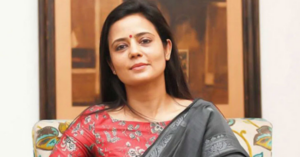Hello Reader,
Mumbaikars welcomed back the iconic double-decker bus yesterday but in a new eclectic variant. Developed and manufactured by Switch Mobility, 200 of these air-conditioned electric buses are expected to hit the city’s roads soon.
In other news, AR Rahman joins the metaverse, announcing his project “Katraar” on Twitter. “Get intrigued,” tweeted the Oscar-winning music director and we are…
Meanwhile, Japan is dealing with a truly unique problem—its young people aren’t drinking enough alcohol. So, of course, the country decided to launch a contest that will help find new ways to encourage the youth to drink more.
Cheers?
No free lunches for fintechs
Should merchant discount charges (MDR) on UPI be increased, capped, or left to the market? The Reserve Bank of India’s recent discussion paper on various charges imposed by payment intermediaries in the country has led to several questions.
YS spoke to industry insiders to see if there’s a win-win situation for all the stakeholders involved: banks, payment players, and consumers.
The MDR factor:
- MDR is a fee (percentage) that merchants pay to the bank that issues the credit card, the payment network provider (like VISA, Mastercard, AMEX), and the bank that provided the POS terminal or device.
- Debit/credit cards already attract MDR while UPI transactions are free, except for UPI-linked RuPay credit cards.
- The majority of players believe that charges will have to be regulated by the RBI, keeping in mind the customers at the other end.
Becoming a creator in Bharat
Brand consultant Manish Pandey is often referred to as the ‘Bade Bhaiya’, or elder brother, of India’s creator economy. That moniker stems from his efforts to afford young creators opportunities he never got himself—by supporting their dreams with the tools they need to realise them.
“I feel I should just be available for anyone to pluck ideas off of me,” he says, in an interview with YS CEO and Founder Shradha Sharma.
Like, share, and subscribe:
- In India, more than 1,200 YouTube channels have at least 1 million subscribers, with 95% of viewers consuming content in local languages and dialects.
- The platform expects a 40% increase in content created in Indian languages such as Bengali, Marathi, Tamil, and Telugu.
- India’s creator economy is estimated to be at $300-400 million, and that of the global market at $104 billion, according to PGA Labs.
Bridging the fiat-crypto currency gap
Bengaluru-based Onmeta wants to drive seamless exchange between fiat money and cryptocurrency, bridging the gap between the two worlds. The startup powers the payment gateway of Web3 companies by offering a ‘crypto on-ramp’ service.
It allows economic value to flow from fiat money (government-issued currency) into crypto assets. Simply put, users can buy cryptocurrency using fiat money, which can then be used to earn NFT assets such as tickets, music, video, and art.
Key takeaways:
- The company runs on a B2B model, while its platform is built on the Polygon infrastructure. It will soon expand into other blockchains including Ethereum and BNB chains.
- Merchants can integrate Onmeta into their dApp through a widget or an API-based integration.
- Onmeta also plans to offer an off-ramp service in the future. It involves selling crypto tokens, NFTs, and any other digital assets to buy cash.
Now get the Daily Capsule in your inbox. Subscribe to our newsletter today!


![Read more about the article [Funding alert] Qure.ai raises $40M from healthcare investors Novo Holdings, HealthQuad](https://blog.digitalsevaa.com/wp-content/uploads/2022/03/Prashant-Final-1648555134652-300x150.jpeg)

![Read more about the article [Jobs Roundup] Here’s how you can land a role at video-editing SaaS platform VideoVerse](https://blog.digitalsevaa.com/wp-content/uploads/2022/04/VideoVersefinal-1650612134595-300x150.png)





